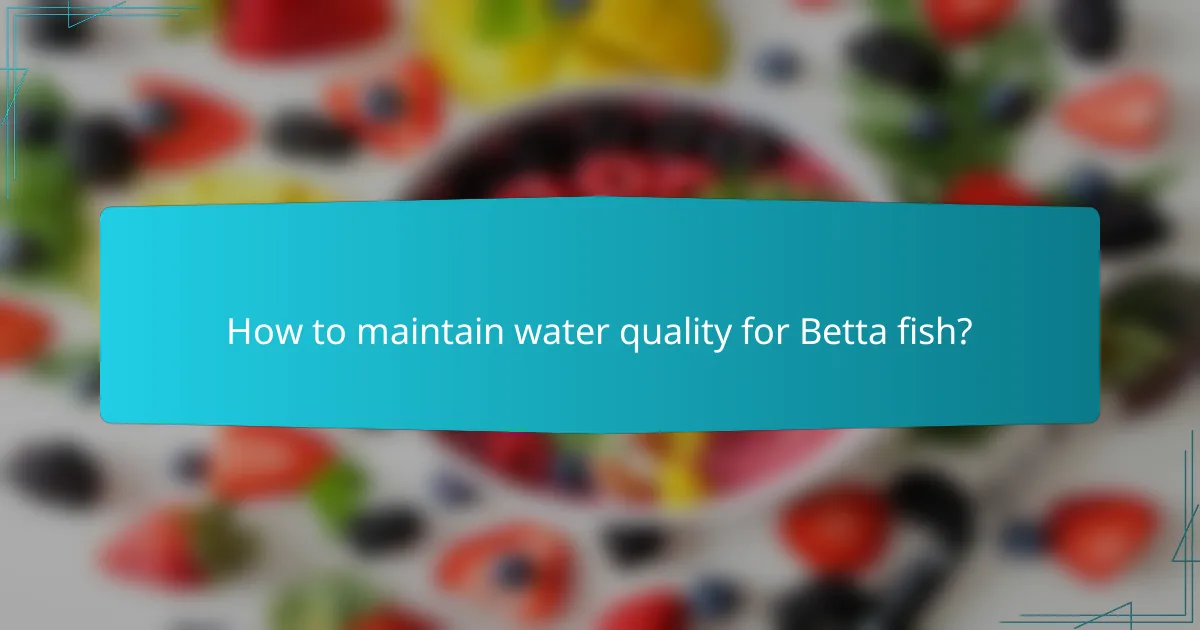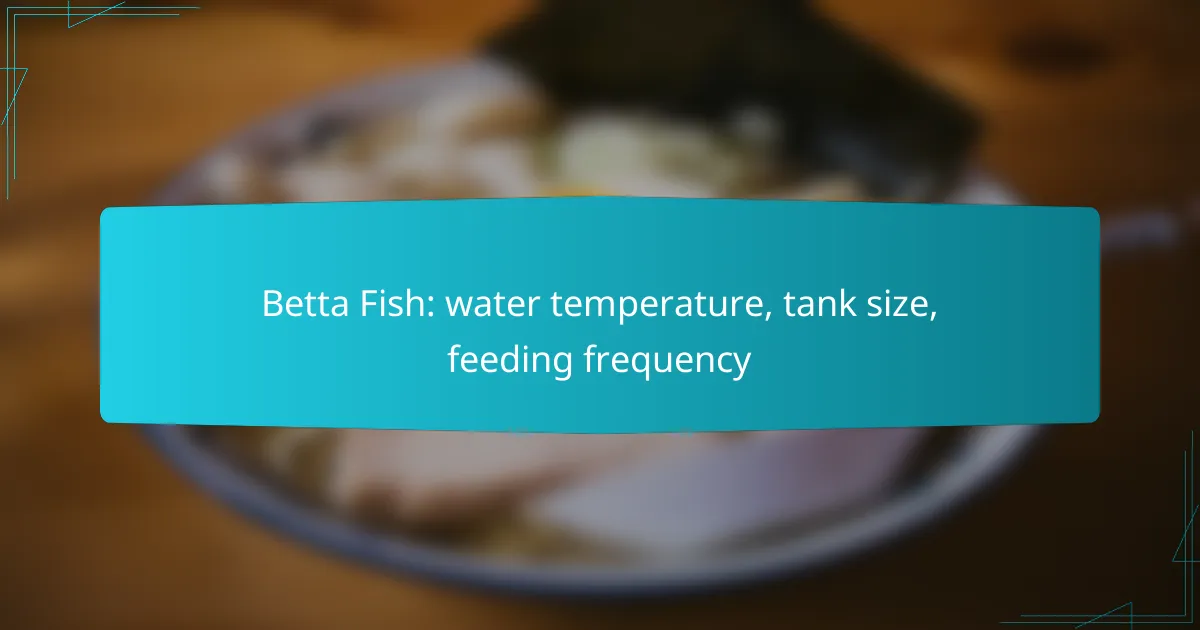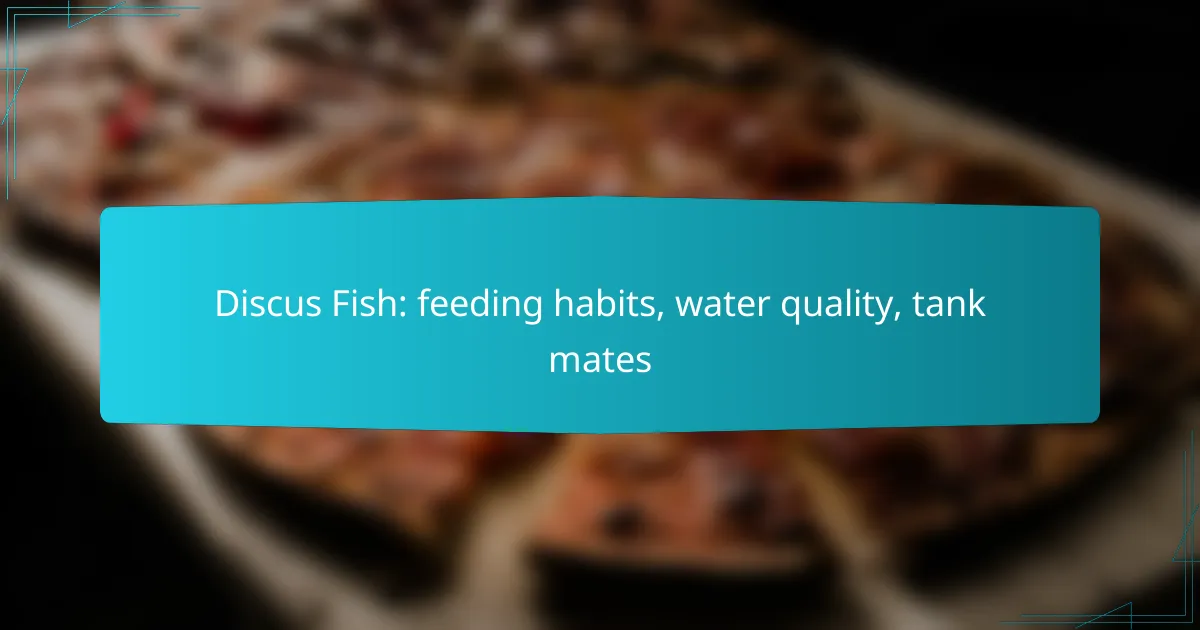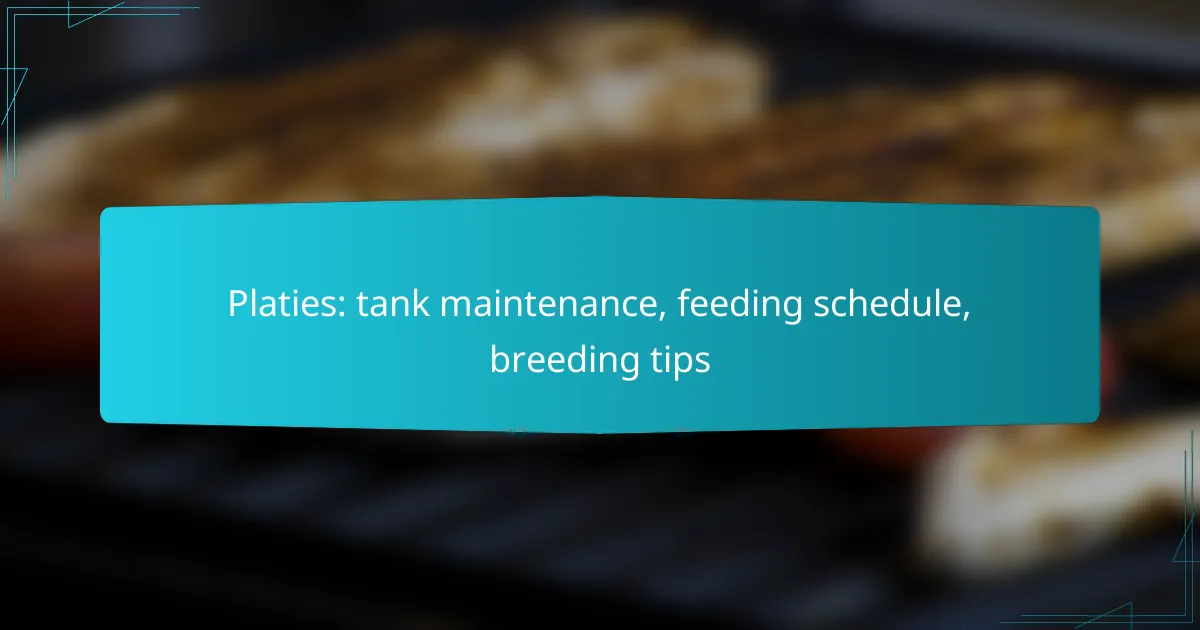Betta fish thrive in a water temperature between 76°F and 82°F, which is essential for their health and metabolism. To provide a stable environment, a minimum tank size of 5 gallons is recommended, as larger tanks improve water quality and overall well-being. Feeding should occur once or twice daily, with careful attention to avoid overfeeding and related health issues.

What is the ideal water temperature for Betta fish?
The ideal water temperature for Betta fish ranges from 76°F to 82°F. Maintaining this temperature range is crucial for their health, as it affects their metabolism, immune system, and overall well-being.
Optimal range: 76°F to 82°F
Betta fish thrive in water temperatures between 76°F and 82°F. This range promotes optimal activity levels and feeding behavior. If the temperature is too low, Betta fish may become lethargic and more susceptible to diseases.
To maintain this temperature, consider using a reliable aquarium heater. Regularly check the water temperature with a thermometer to ensure it stays within the optimal range.
Temperature fluctuations to avoid
Sudden temperature changes can stress Betta fish, leading to health issues. Avoid fluctuations greater than 2°F within a 24-hour period. Consistent temperatures help prevent shock and improve the fish’s overall resilience.
Be cautious with room temperature changes, especially during seasonal shifts. Ensure that your aquarium is placed in a stable environment, away from drafts or direct sunlight, to minimize temperature variations.

What tank size is recommended for Betta fish?
A minimum tank size of 5 gallons is recommended for Betta fish to ensure their health and well-being. Larger tanks provide a more stable environment and better water quality, which are crucial for the fish’s longevity.
Minimum tank size: 5 gallons
A 5-gallon tank is the absolute minimum size for a Betta fish. This size allows for adequate swimming space and helps maintain stable water parameters, which can fluctuate more easily in smaller tanks. A tank of this size also provides enough room for filtration and decorations, which can enhance the fish’s habitat.
When setting up a 5-gallon tank, ensure it has a proper filtration system and heater to maintain the ideal water temperature, typically between 76°F and 82°F (24°C to 28°C). Regular water changes are essential to keep the environment clean and safe.
Benefits of larger tanks
Larger tanks, such as those ranging from 10 to 20 gallons, offer several advantages for Betta fish. They provide more swimming space, which can reduce stress and promote natural behaviors. A bigger volume of water also helps dilute toxins and maintain better water quality, making it easier to manage the tank’s ecosystem.
In addition, larger tanks allow for more complex aquascaping, which can include plants and hiding spots that enrich the Betta’s environment. This can lead to improved mental stimulation and overall health. When considering a tank size, think about the long-term benefits of investing in a larger setup for your Betta fish.

How often should you feed Betta fish?
Betta fish should be fed once or twice daily, depending on their age and activity level. Overfeeding can lead to health issues, so it’s crucial to monitor their intake and adjust accordingly.
Feeding frequency: 1-2 times daily
Feeding Betta fish 1-2 times a day is generally recommended. Young or active Bettas may benefit from two smaller meals, while adult fish can thrive on one meal. It’s essential to establish a routine to help maintain their health.
When feeding, offer only what they can consume in a few minutes to avoid leftover food that can pollute the tank. A good rule of thumb is to provide a small pinch of food per fish.
Types of food for Betta fish
Betta fish require a balanced diet that includes high-quality pellets, flakes, and occasional live or frozen foods. Pellets specifically designed for Betta fish are often high in protein, which is vital for their growth and vitality.
In addition to pellets, you can supplement their diet with live or frozen options like brine shrimp, daphnia, or bloodworms. These foods provide variety and stimulate natural hunting behaviors, enhancing their overall well-being.

What are the signs of stress in Betta fish?
Signs of stress in Betta fish can manifest in both behavioral and physical changes. Recognizing these signs early can help prevent serious health issues and improve the fish’s overall well-being.
Behavioral indicators
Behavioral signs of stress in Betta fish include excessive hiding, lethargy, and erratic swimming patterns. A stressed Betta may spend more time at the bottom of the tank or dart around rapidly, indicating discomfort.
Another common behavioral indicator is a lack of appetite. If your Betta fish refuses to eat for several days, it may be experiencing stress due to poor water quality or unsuitable tank conditions.
Physical signs
Physical signs of stress in Betta fish can include faded colors, frayed fins, and clamped fins. A Betta that appears dull or has lost its vibrant hues may be under duress.
Additionally, look for signs of disease, such as white spots or lesions on the body. These can be exacerbated by stress and indicate that the fish needs immediate attention and a review of its environment.

How to maintain water quality for Betta fish?
Maintaining water quality for Betta fish involves regular monitoring and management of their aquatic environment. Key factors include water changes, filtration, and temperature control to ensure a healthy habitat.
Regular water changes
Performing regular water changes is crucial for maintaining optimal water quality for Betta fish. Aim for changing 25-50% of the tank water weekly to remove toxins and replenish essential minerals.
Use a water conditioner to eliminate harmful chemicals like chlorine and chloramine from tap water. Always ensure the new water matches the tank’s temperature to avoid shocking the fish.
Filtration options
Choosing the right filtration system is vital for keeping Betta fish healthy. Options include sponge filters, which provide gentle filtration without strong currents, and hang-on-back filters that offer more robust filtration.
When selecting a filter, consider the flow rate; it should be low enough not to disturb the Betta’s swimming but effective enough to maintain water clarity. Regularly clean the filter media to prevent buildup and maintain efficiency.

What are the best tank mates for Betta fish?
Betta fish can thrive with certain tank mates, but compatibility is crucial. Ideal companions should not provoke aggression or stress in Betta fish, ensuring a peaceful aquarium environment.
Compatible species
Some fish species are known to coexist harmoniously with Betta fish. Good options include Corydoras catfish, which are bottom dwellers and generally non-aggressive, and certain types of snails, such as Nerite snails, which help keep the tank clean without bothering the Betta.
Additionally, small schooling fish like Neon Tetras can work well, provided they are kept in groups to reduce stress and avoid triggering the Betta’s territorial instincts. Always monitor interactions to ensure a peaceful coexistence.
Species to avoid
Some species should be avoided when selecting tank mates for Betta fish due to their potential to provoke aggression. For instance, any fish with long, flowing fins, like Guppies or other Bettas, can trigger a Betta’s territorial behavior.
Moreover, larger or more aggressive fish, such as Cichlids or Barbs, can pose a threat to Betta fish. It’s best to steer clear of these species to maintain a calm and safe environment in the aquarium.

How does tank decoration affect Betta fish?
Tank decoration significantly impacts Betta fish by providing essential hiding spots and stimulating their environment. Properly chosen decorations can help reduce stress and promote natural behaviors, enhancing the overall health of your Betta.
Impact on stress levels
Stress levels in Betta fish can be influenced by the availability of hiding places and the complexity of their environment. A well-decorated tank allows Betta fish to retreat and feel secure, which can lower anxiety and aggression. Conversely, a sparse tank may lead to heightened stress and territorial behavior.
To maintain a balanced environment, include various decorations like plants, caves, and driftwood. Aim for a mix that provides both open swimming areas and secluded spots, ensuring your Betta feels safe and comfortable.
Types of decorations
Common types of decorations for Betta tanks include live plants, artificial plants, rocks, and ornaments. Live plants, such as Java fern and Anubias, not only enhance aesthetics but also improve water quality by absorbing toxins. Artificial plants can be easier to maintain and are available in various shapes and colors.
When selecting decorations, ensure they are smooth and free of sharp edges to prevent injury to your Betta. Avoid overcrowding the tank, as this can limit swimming space and create stress. A well-thought-out arrangement will create a visually appealing and functional habitat for your fish.










